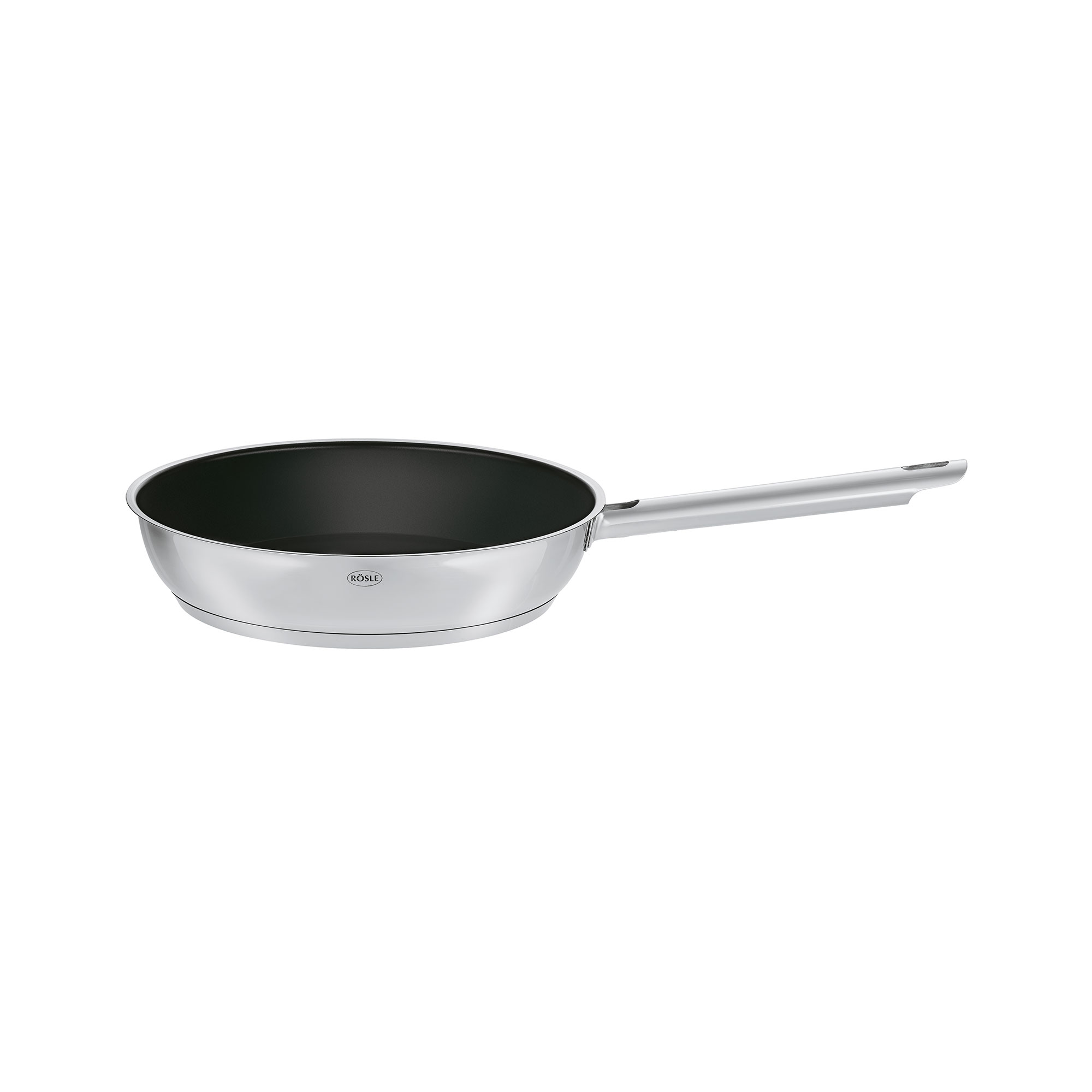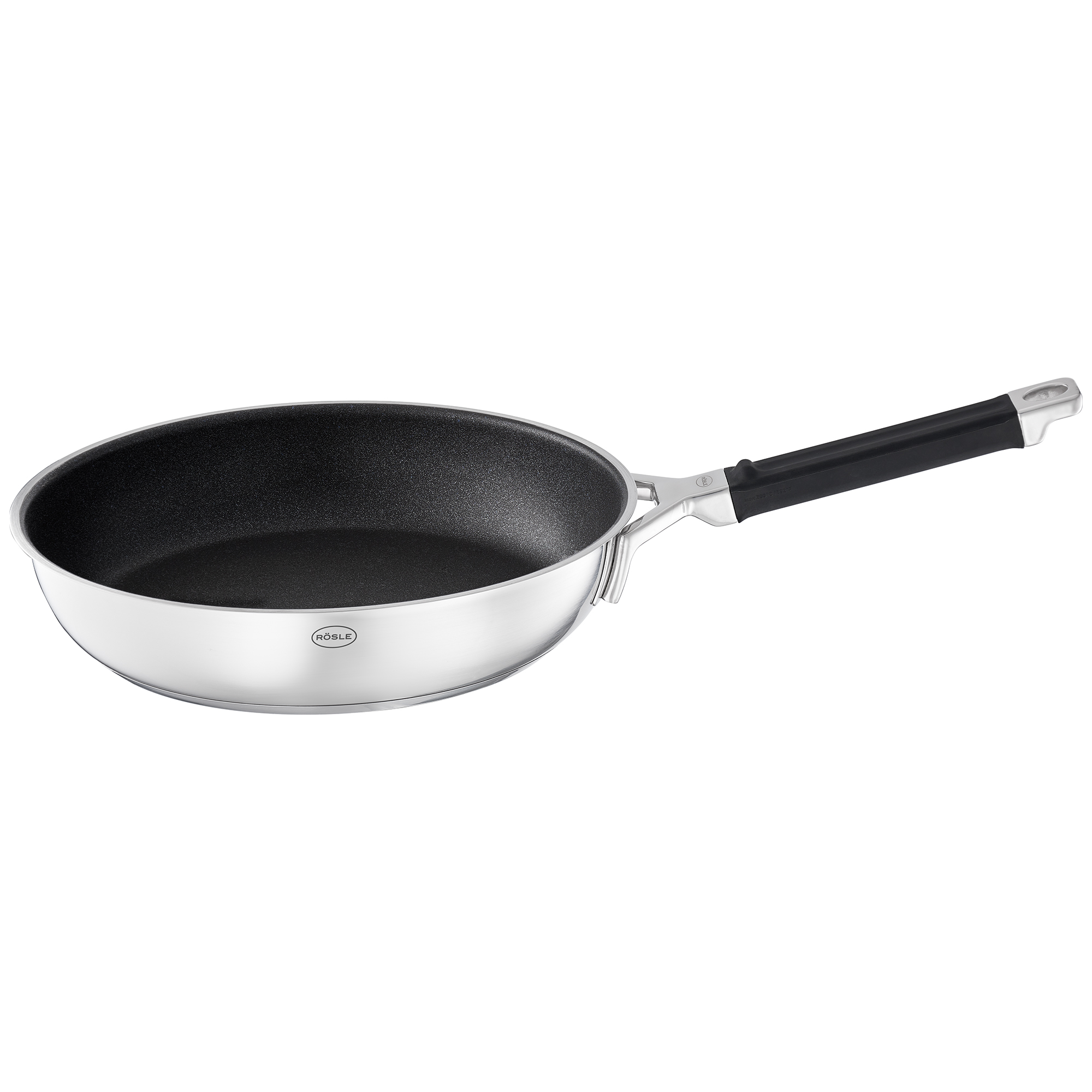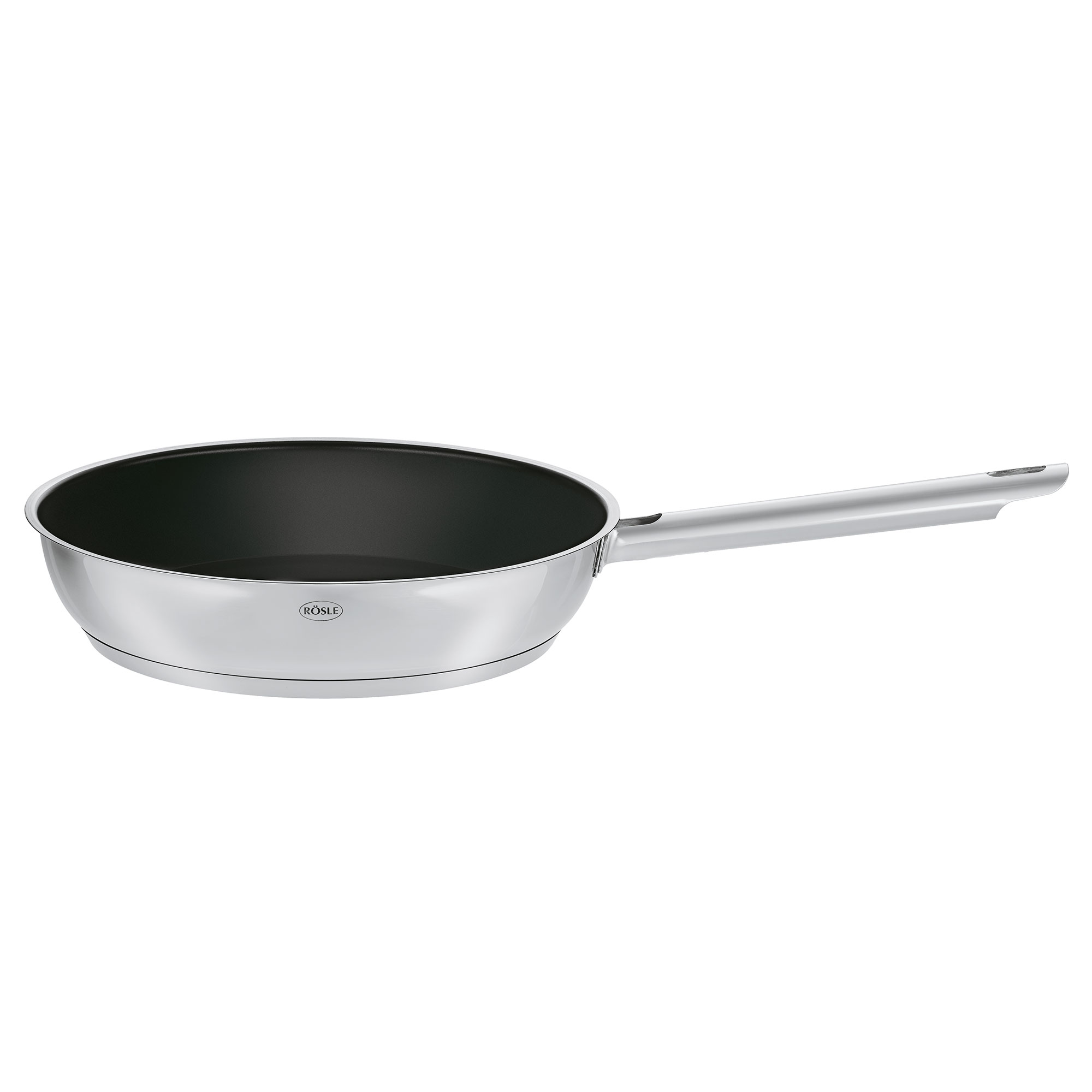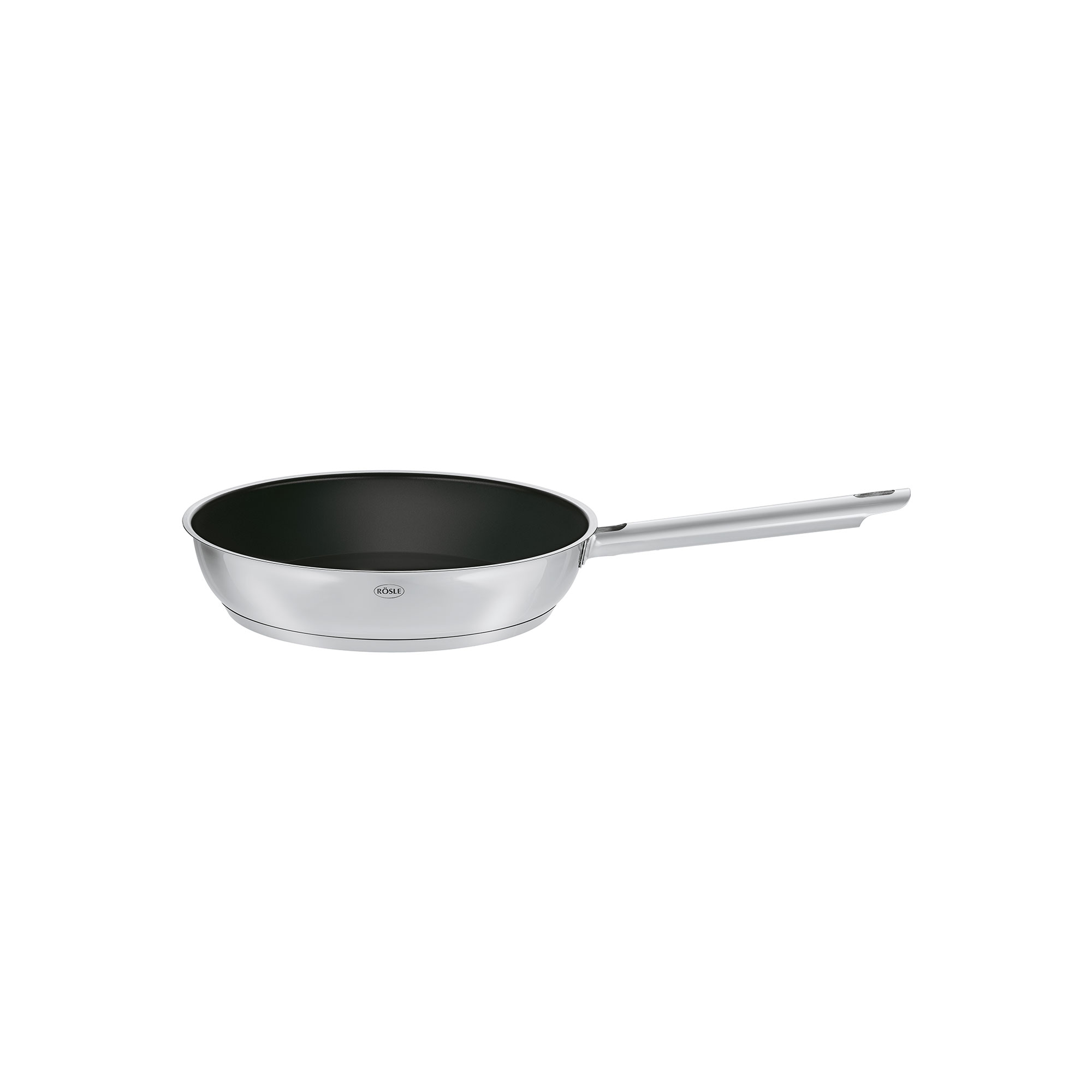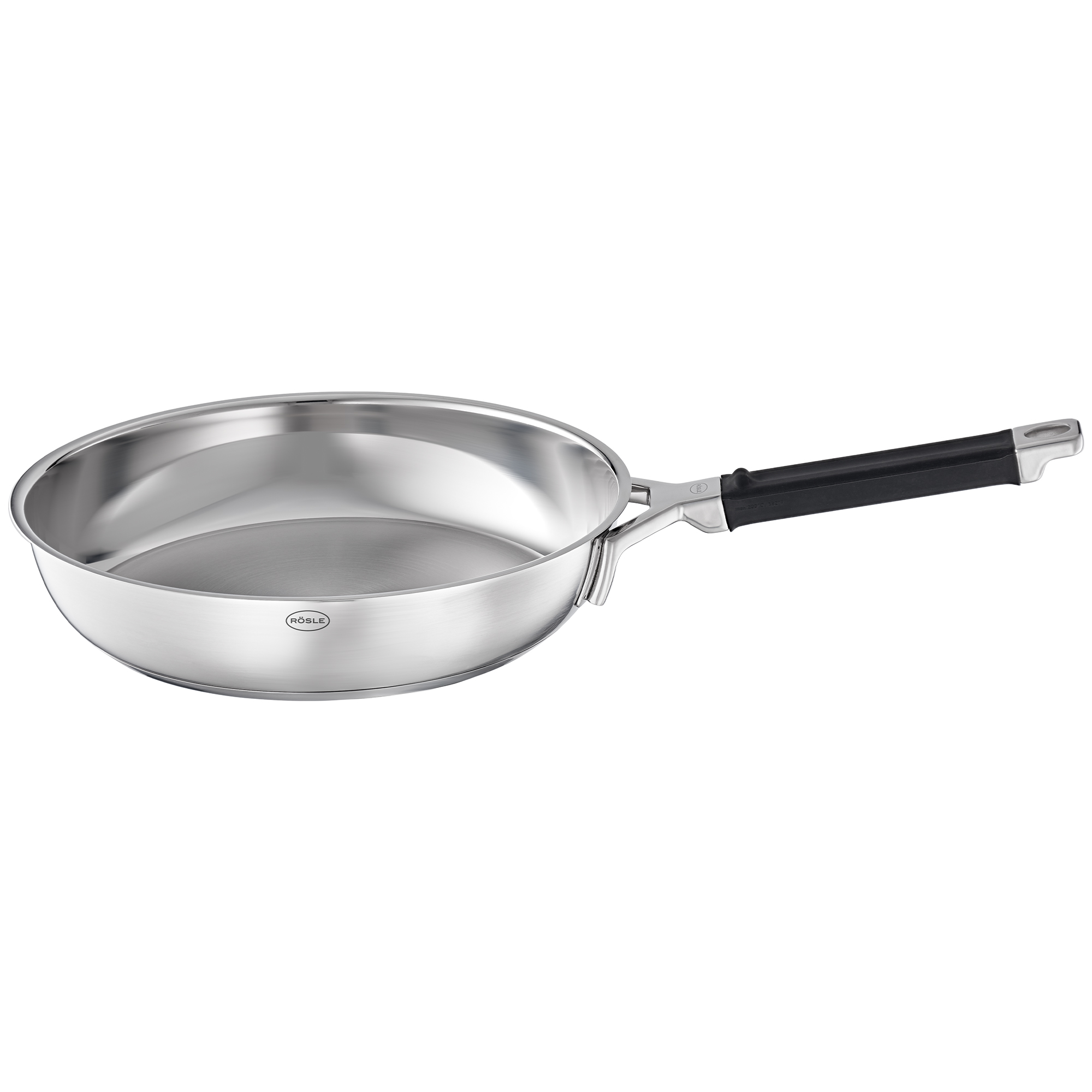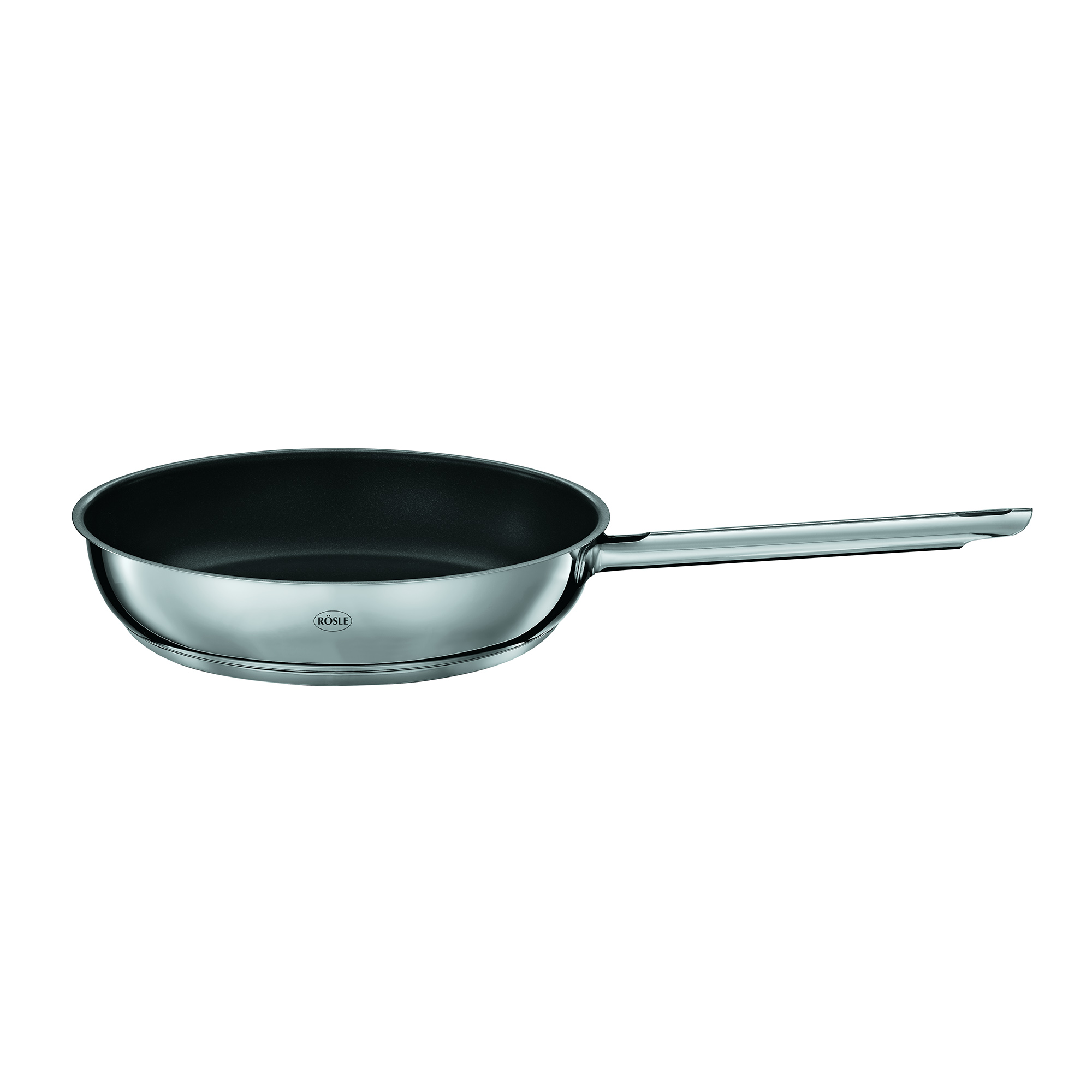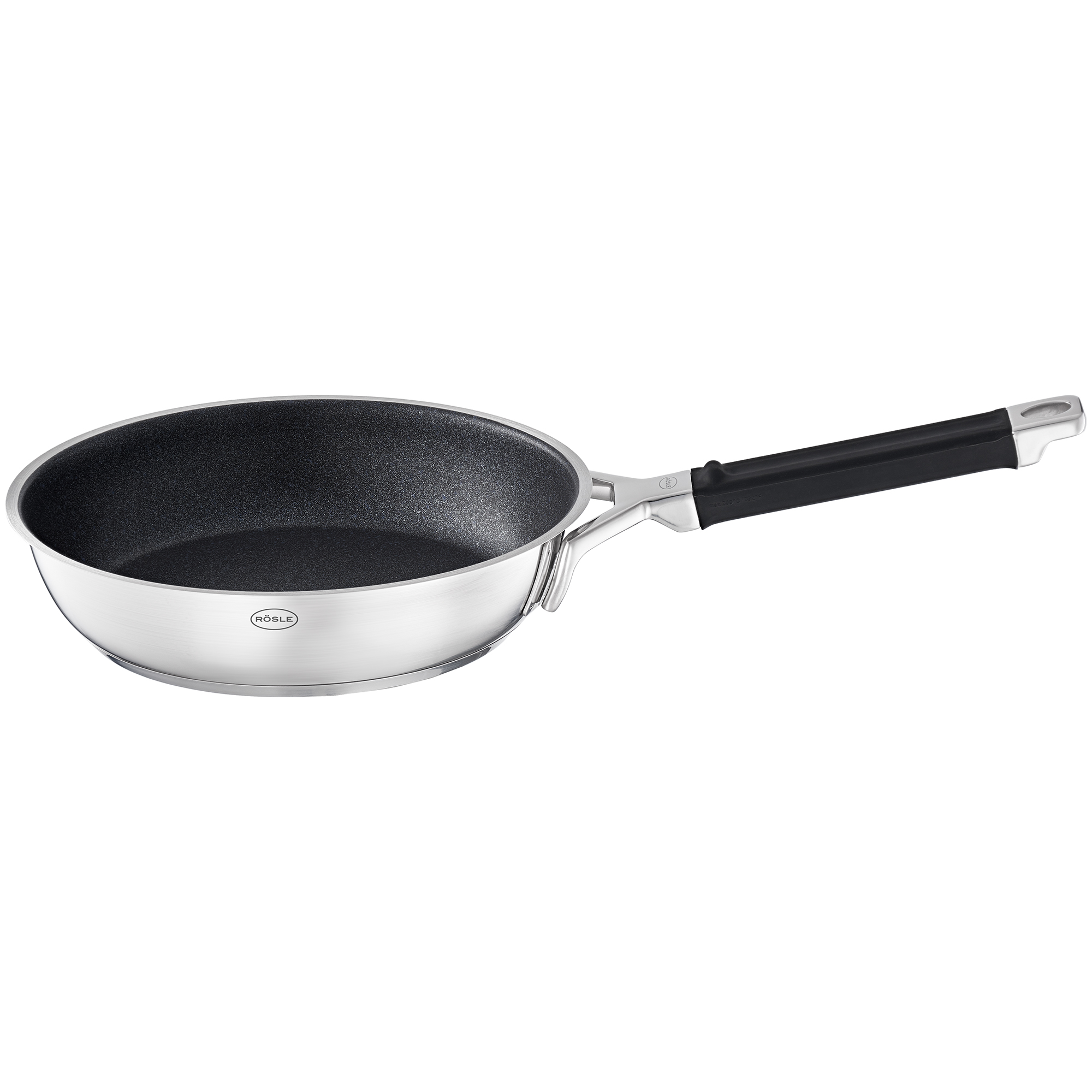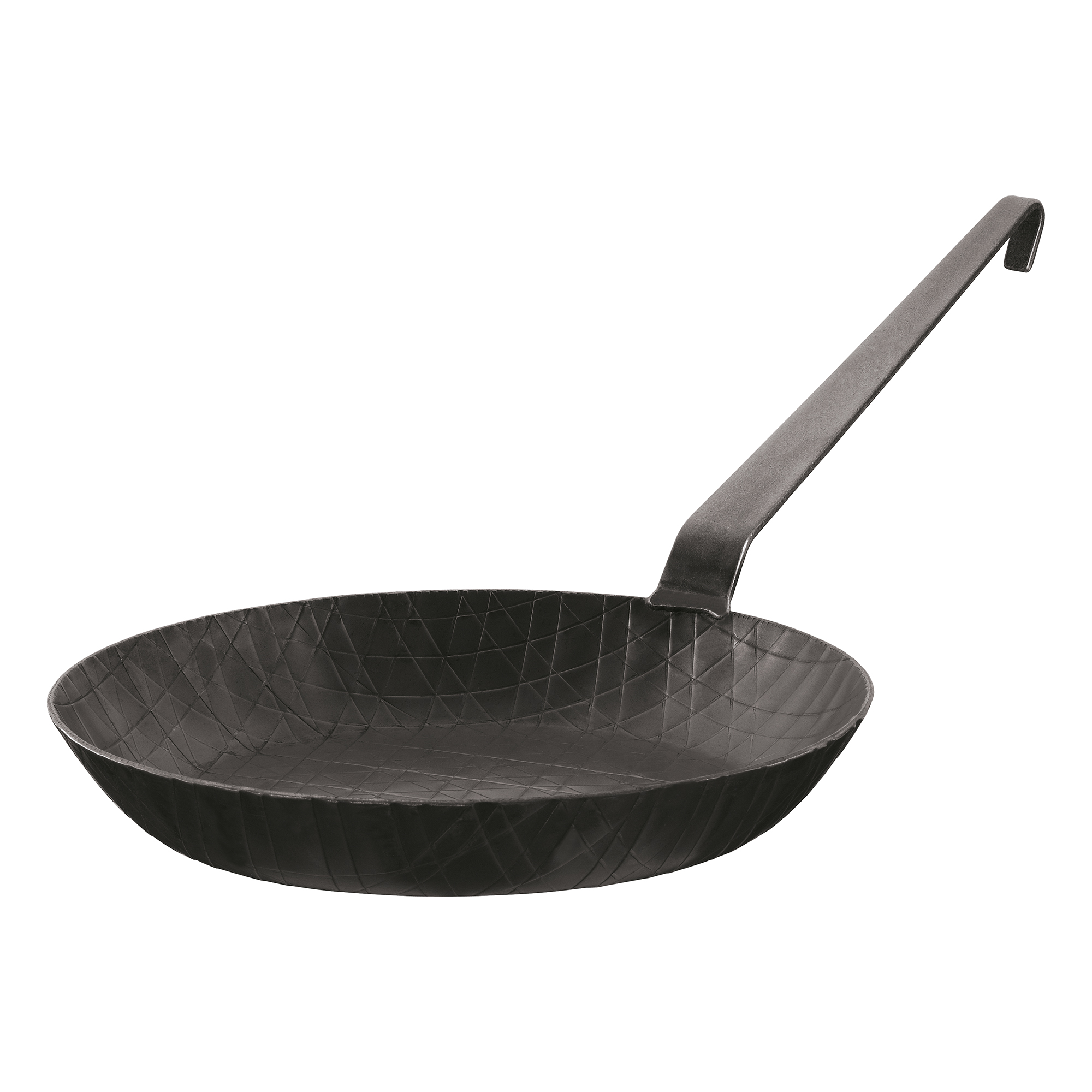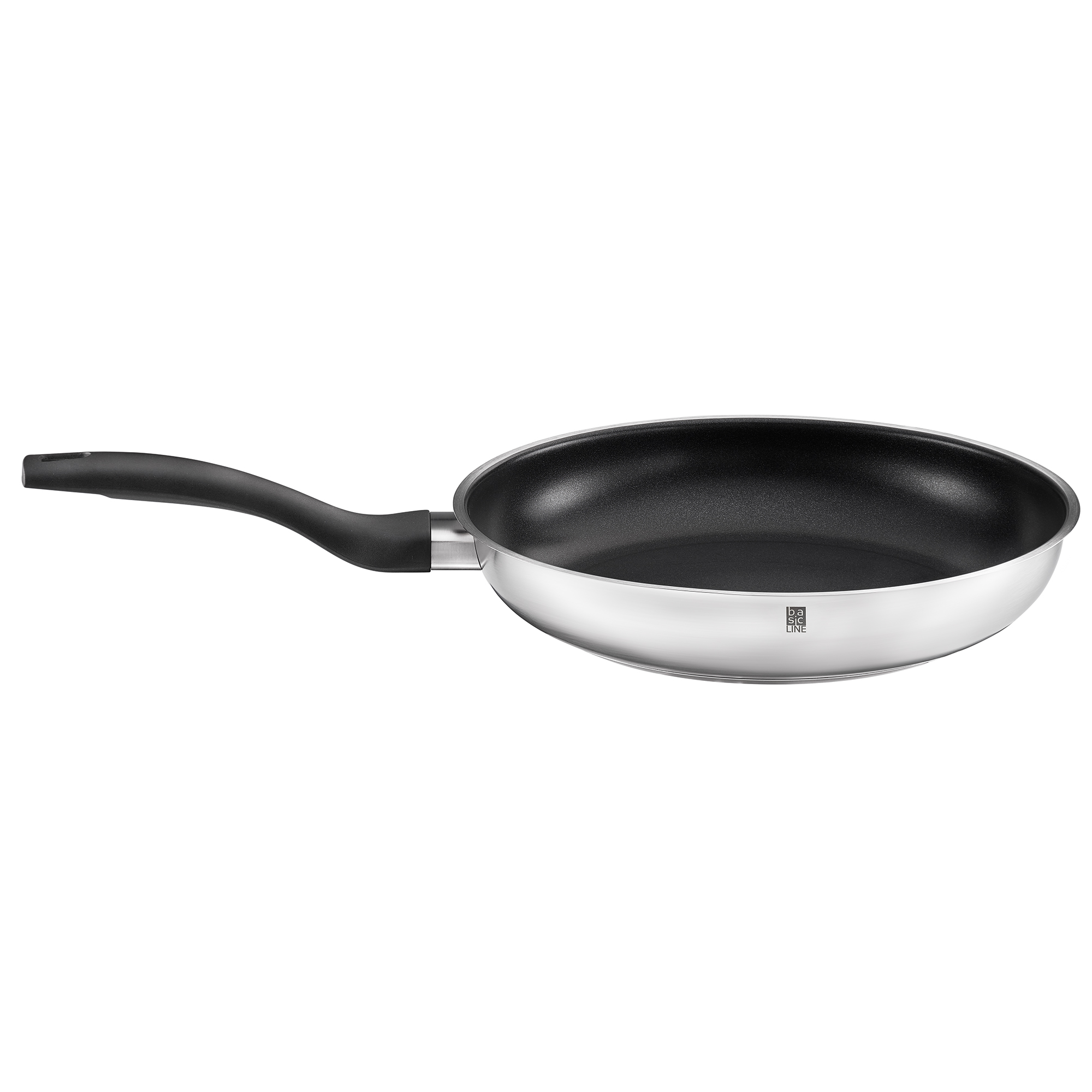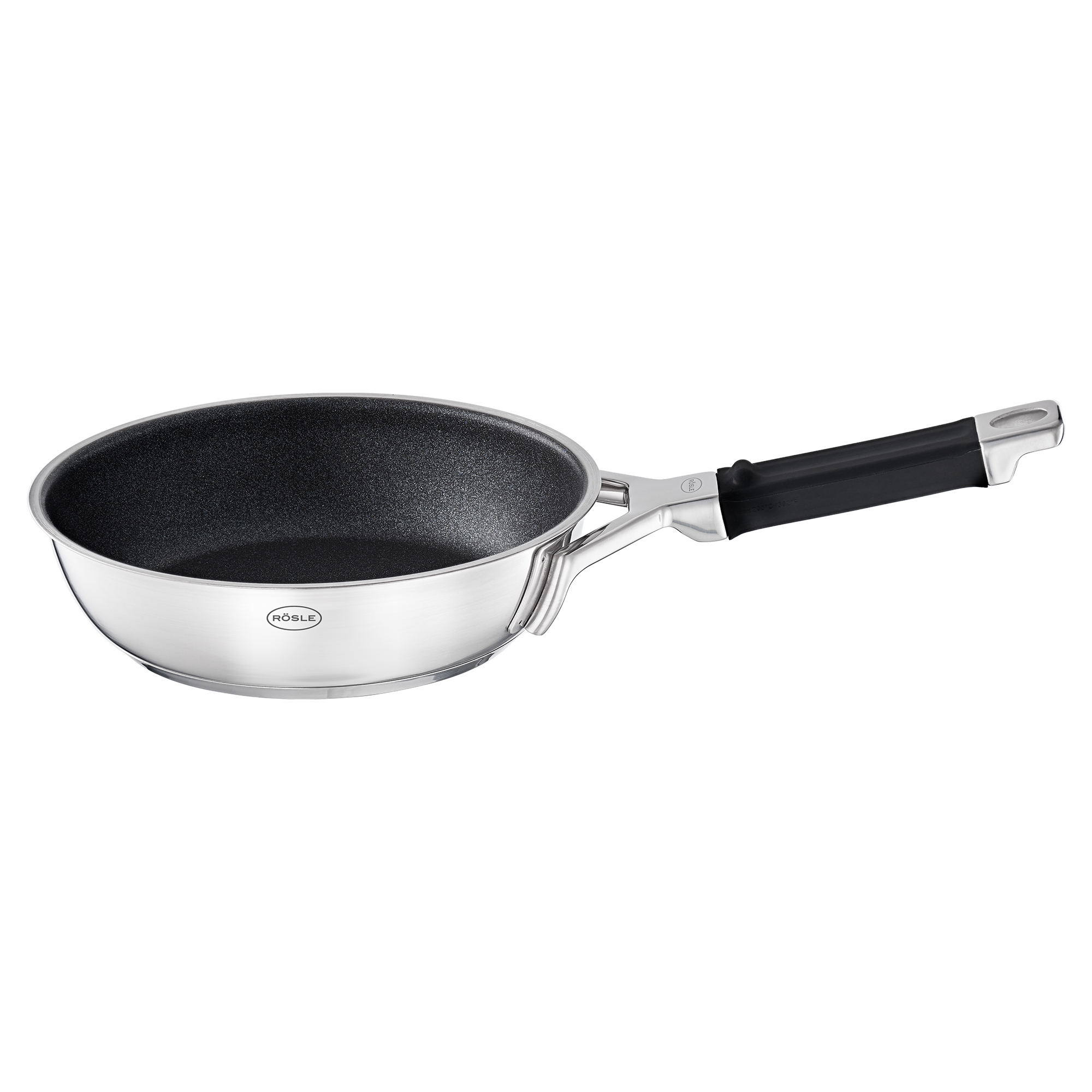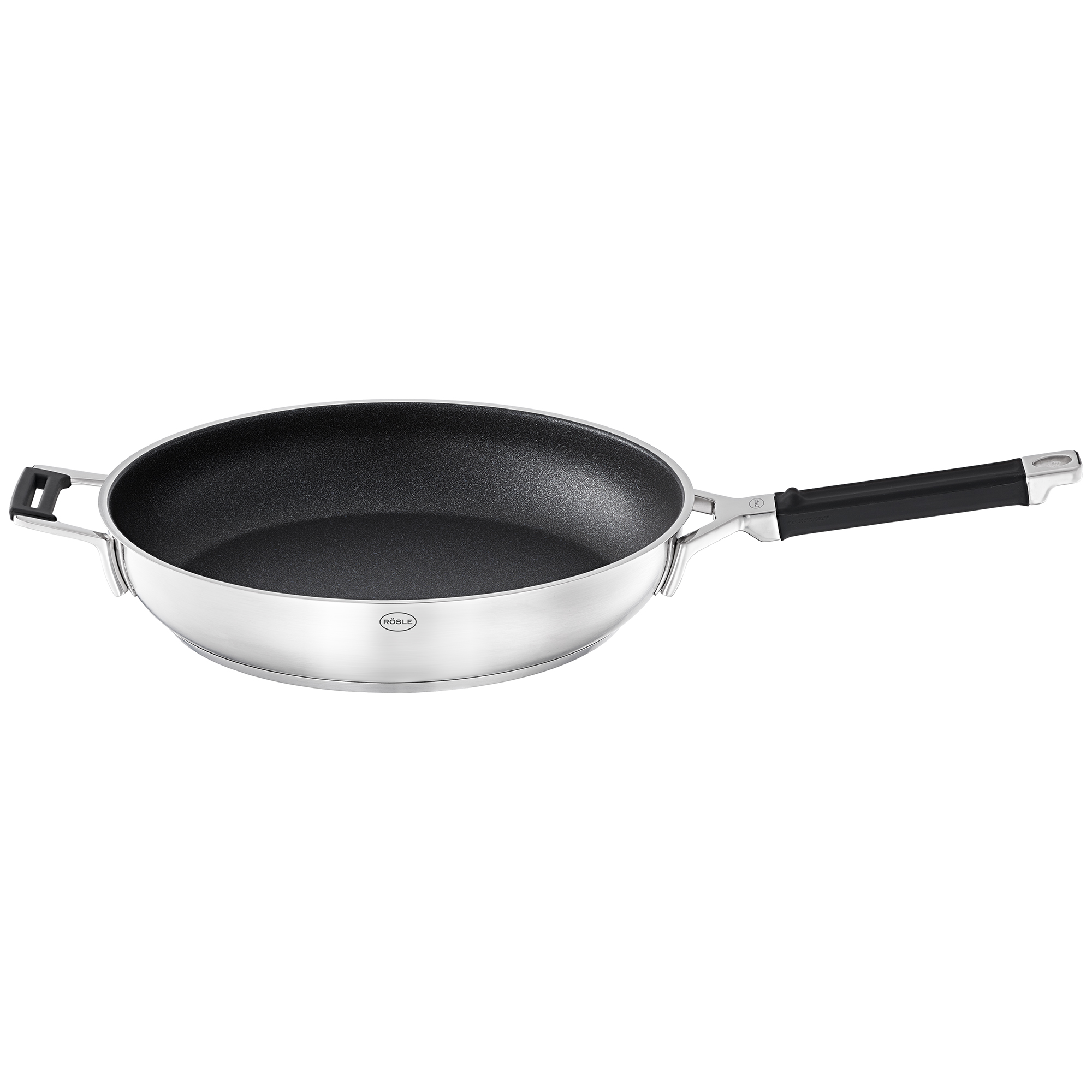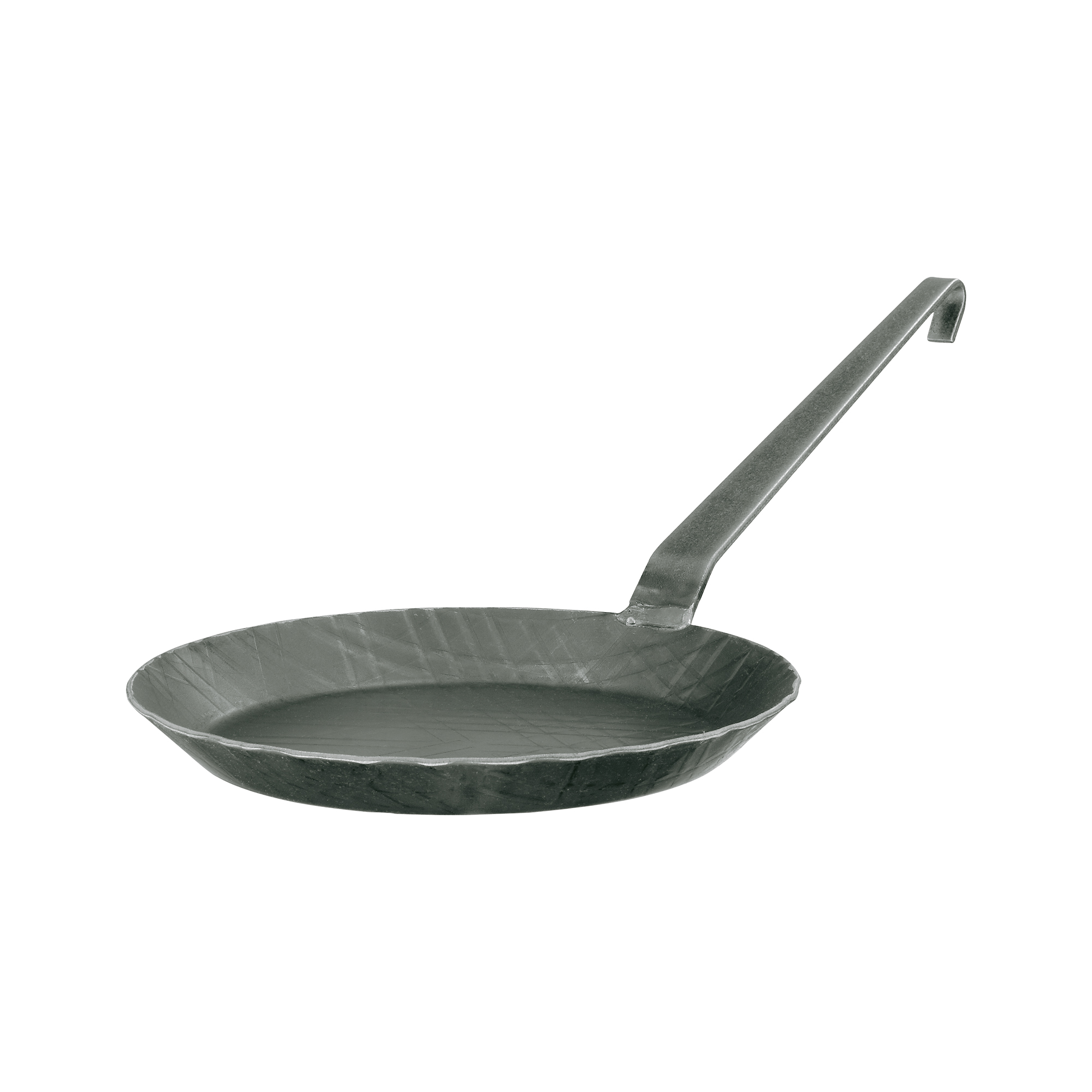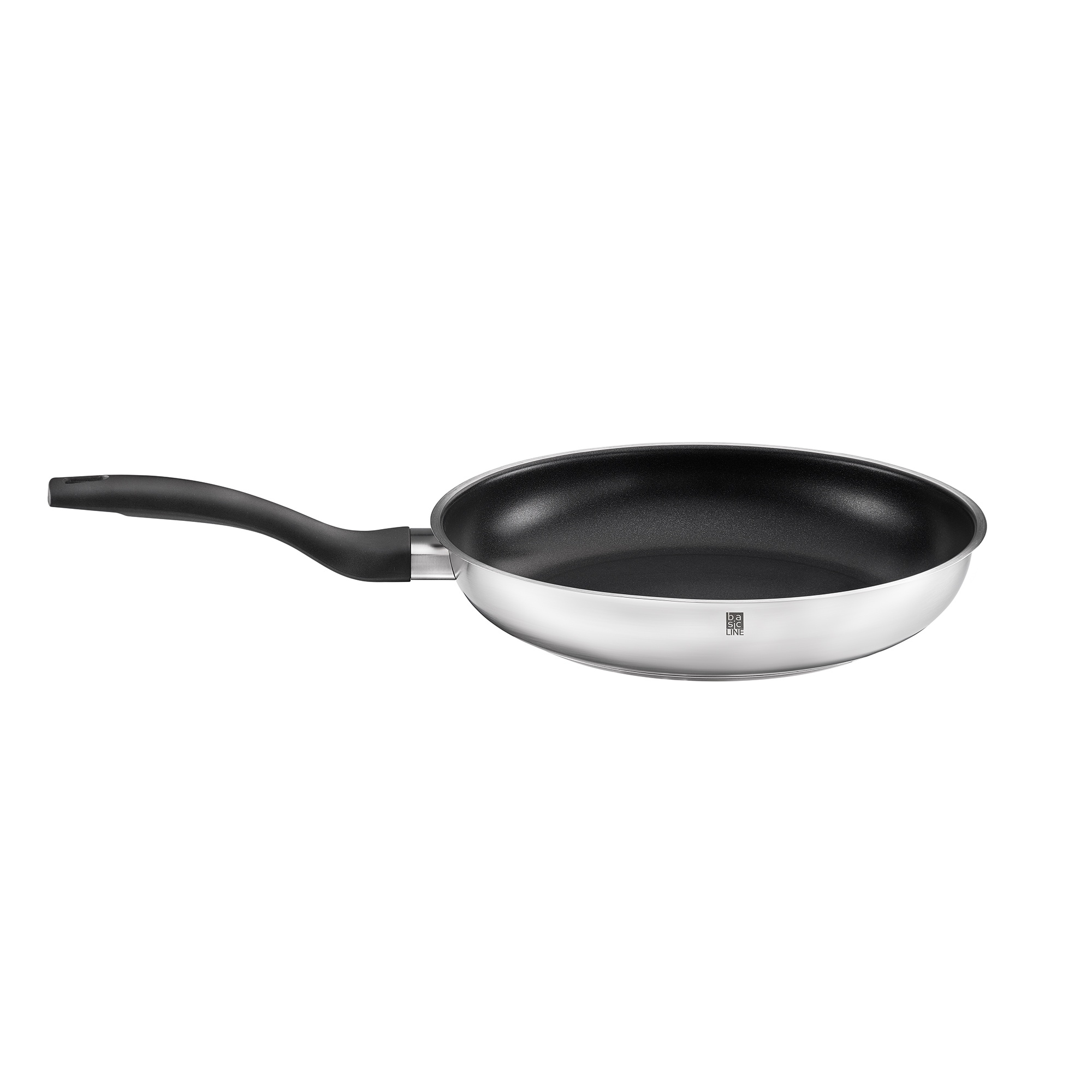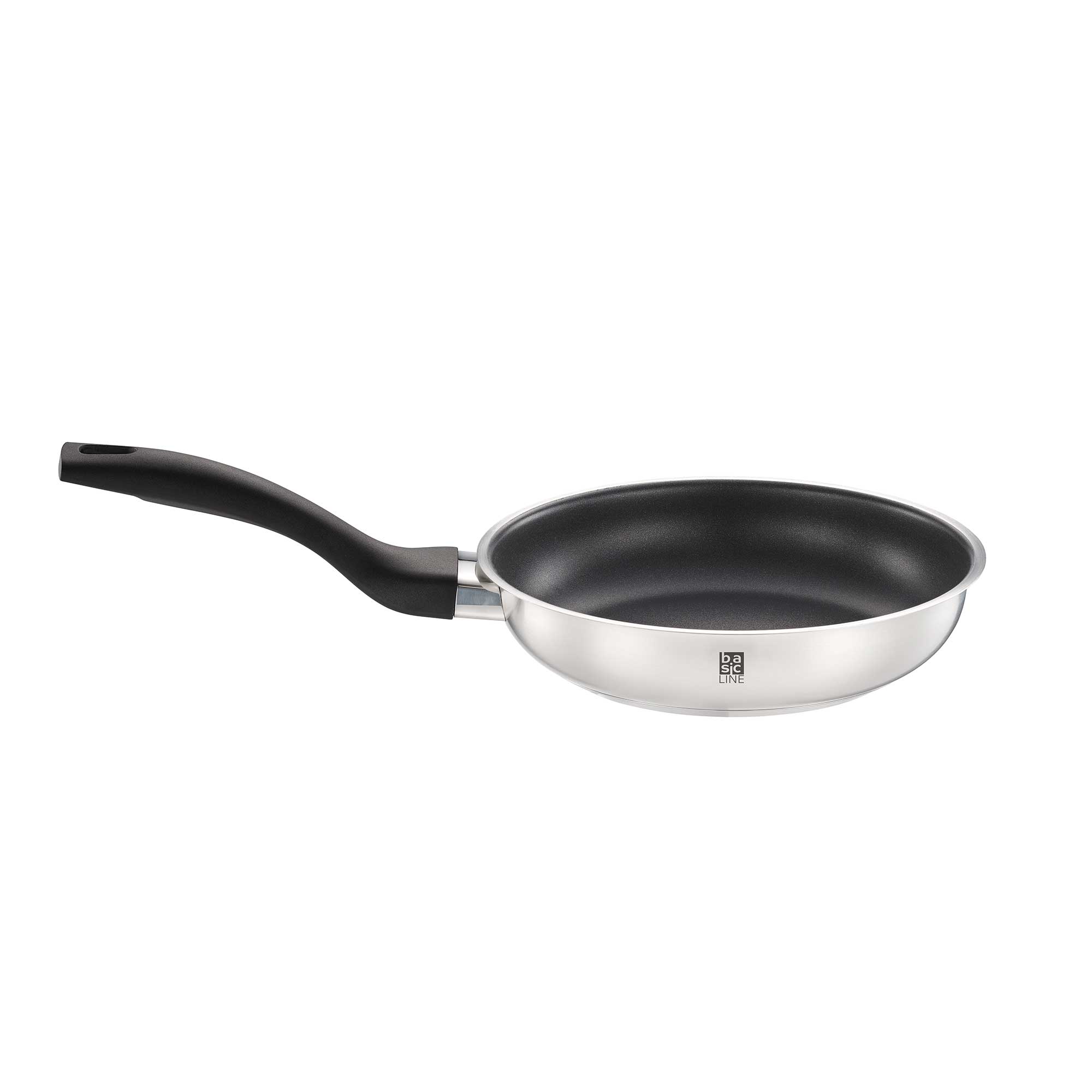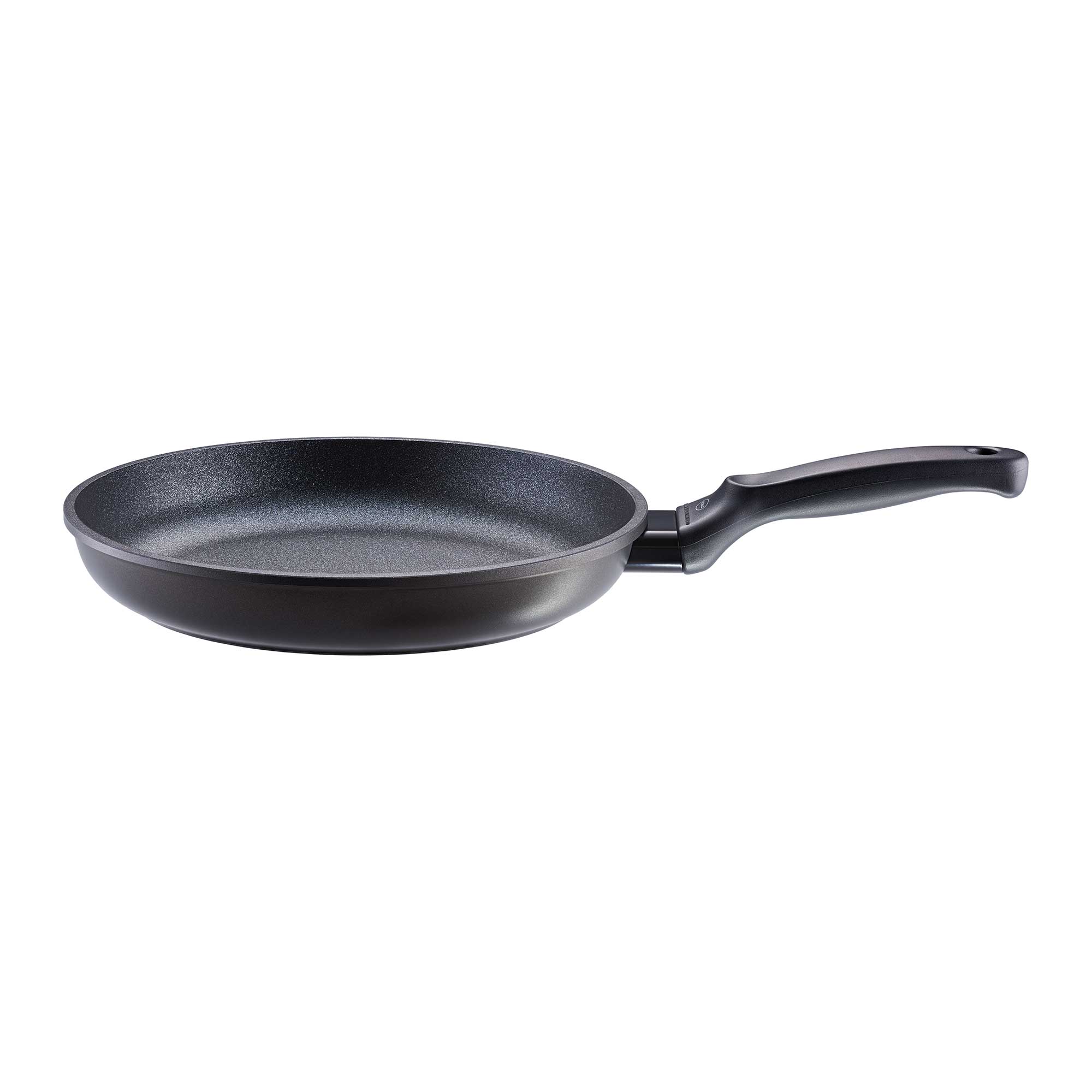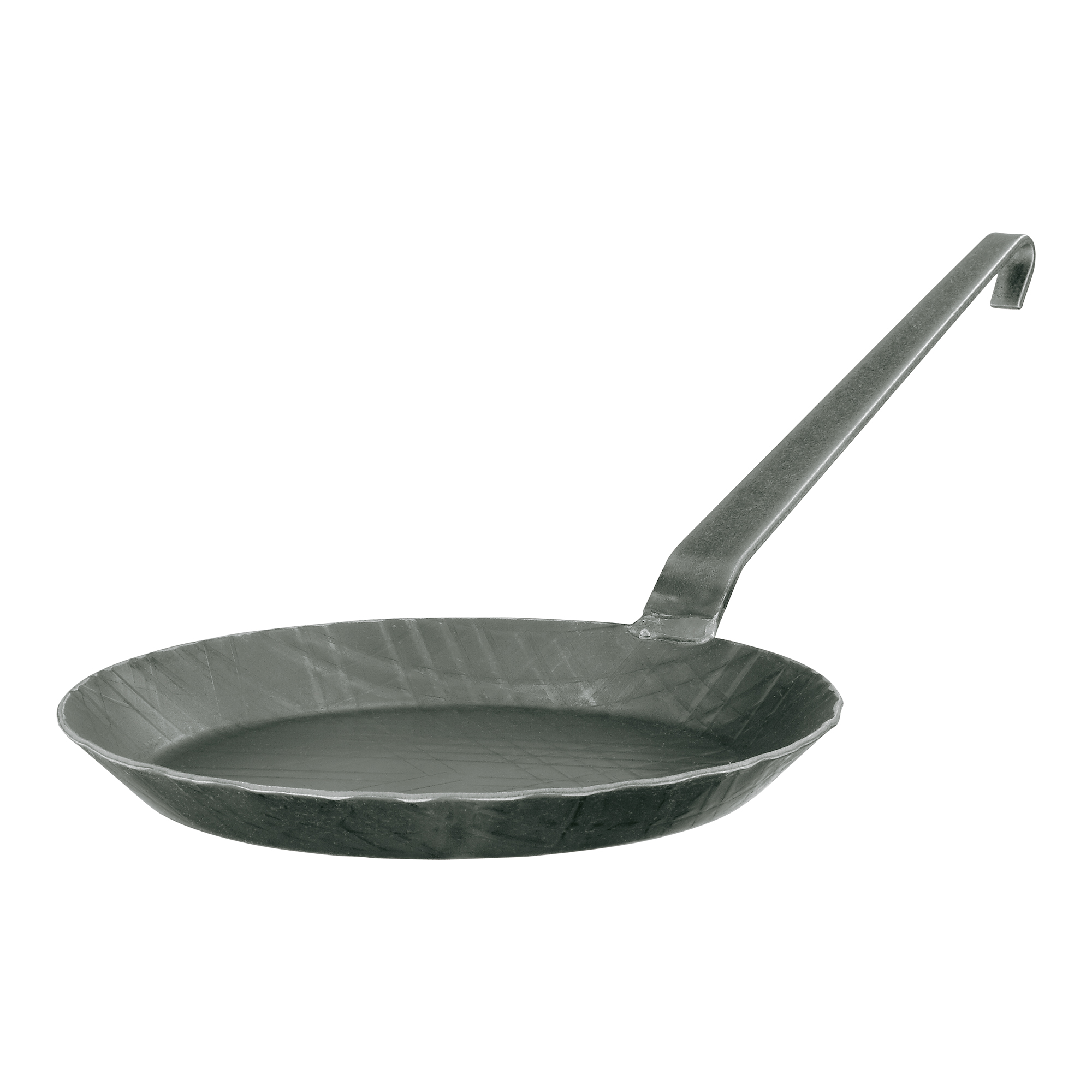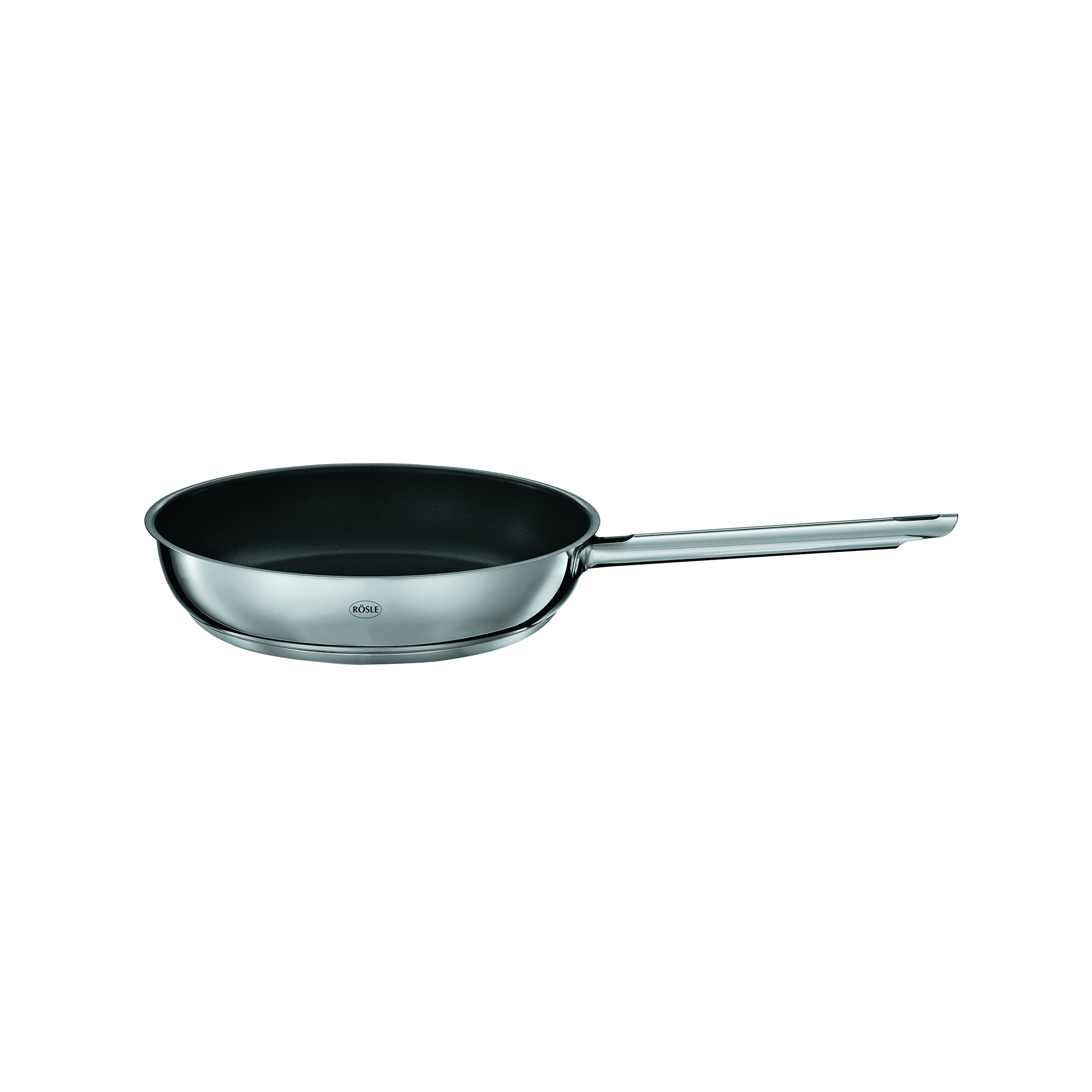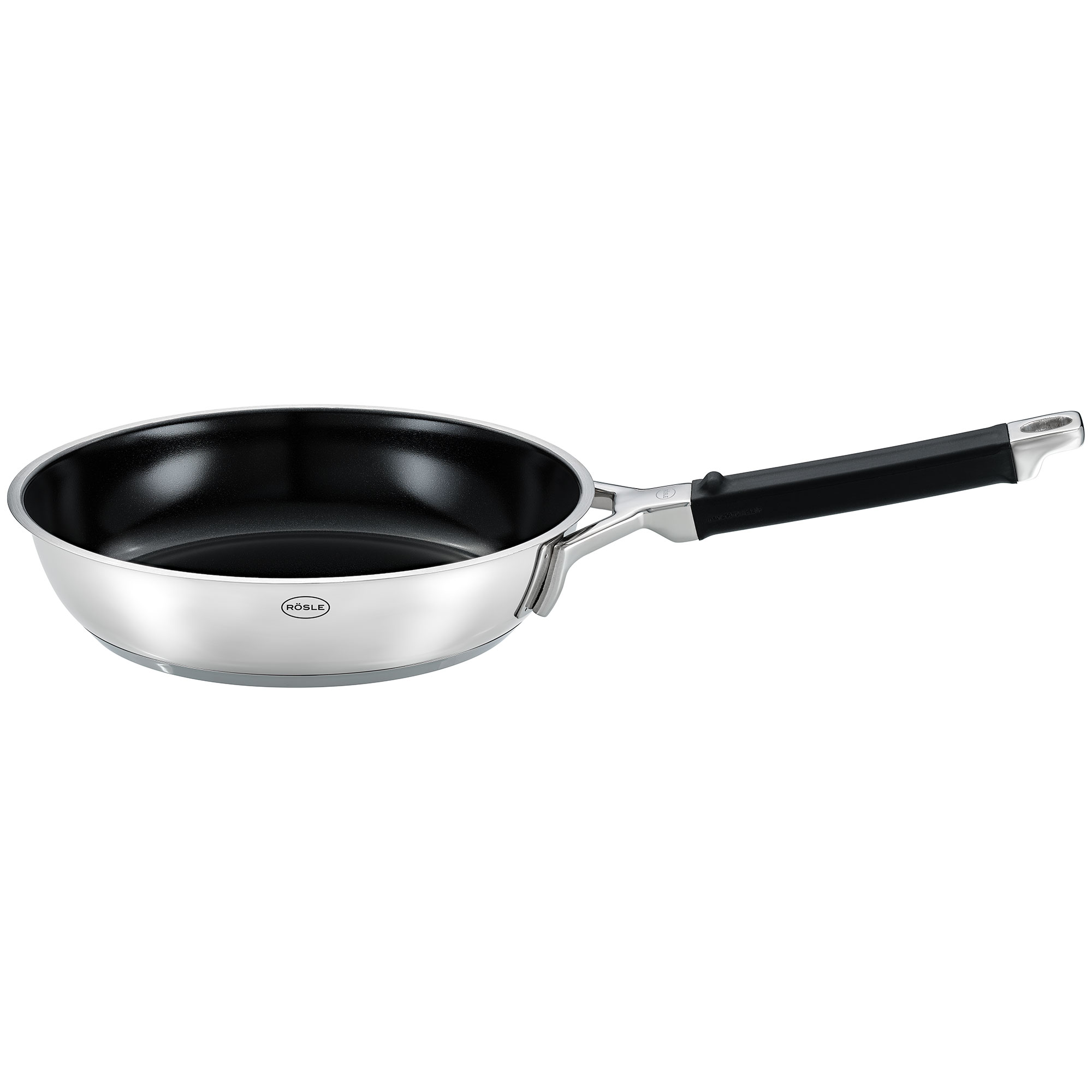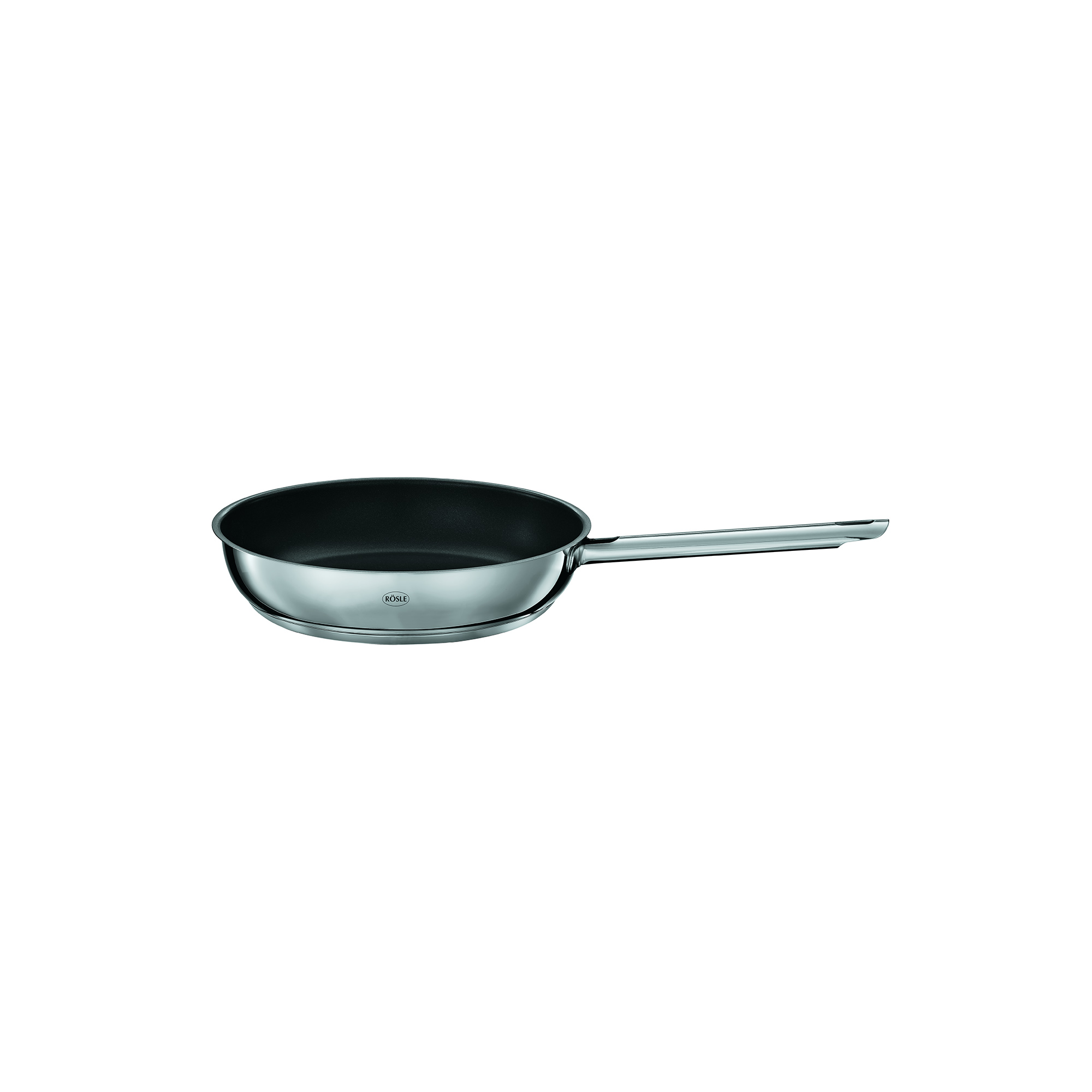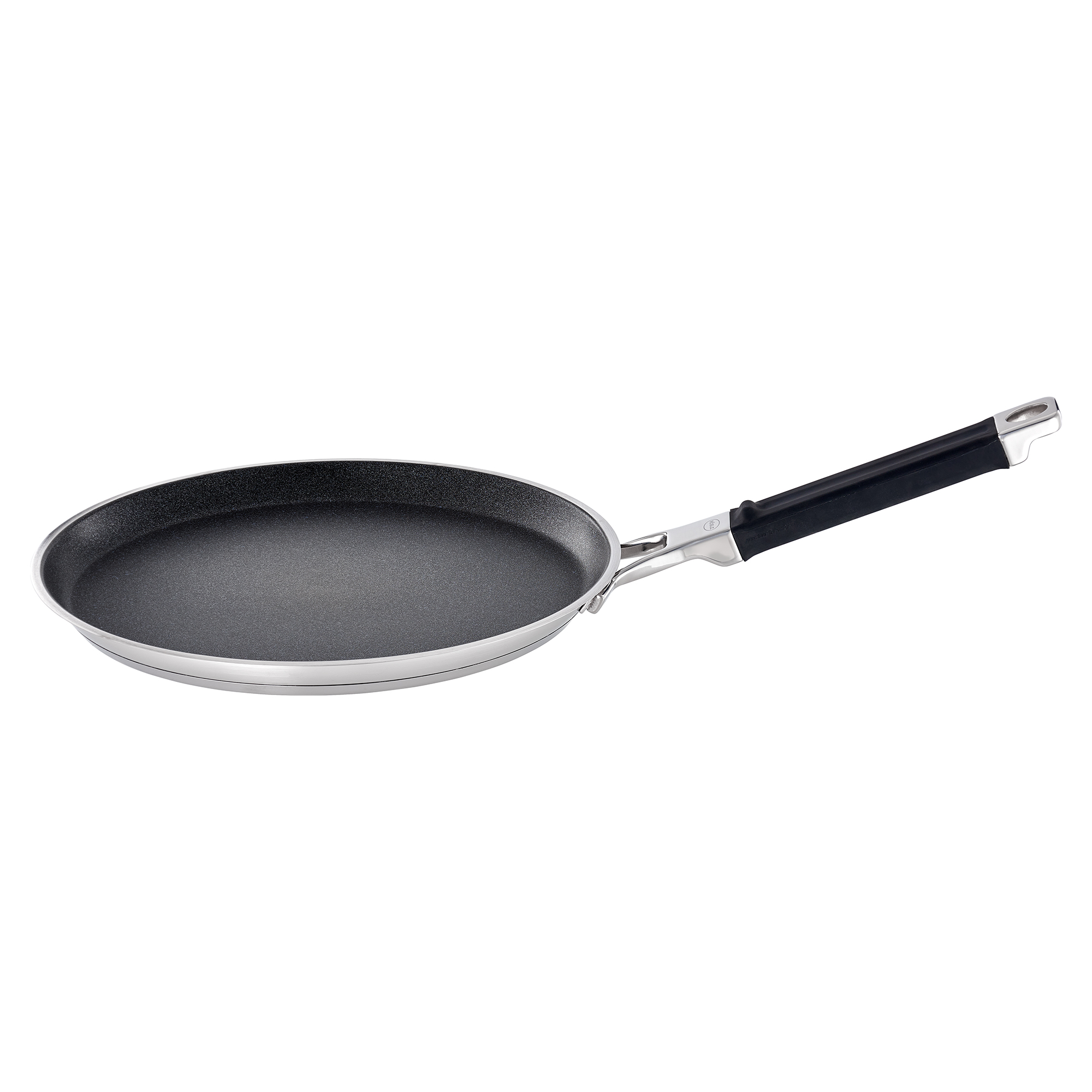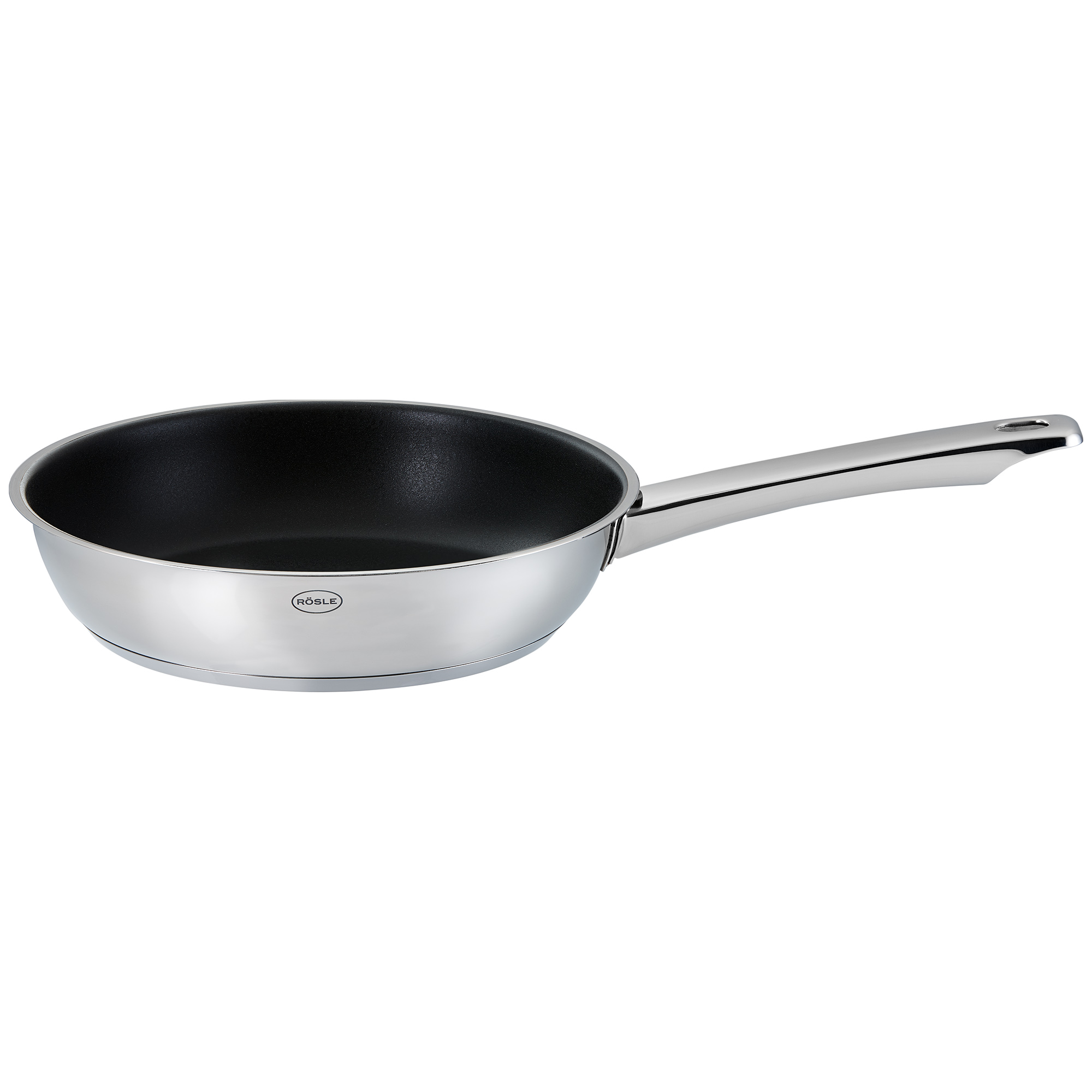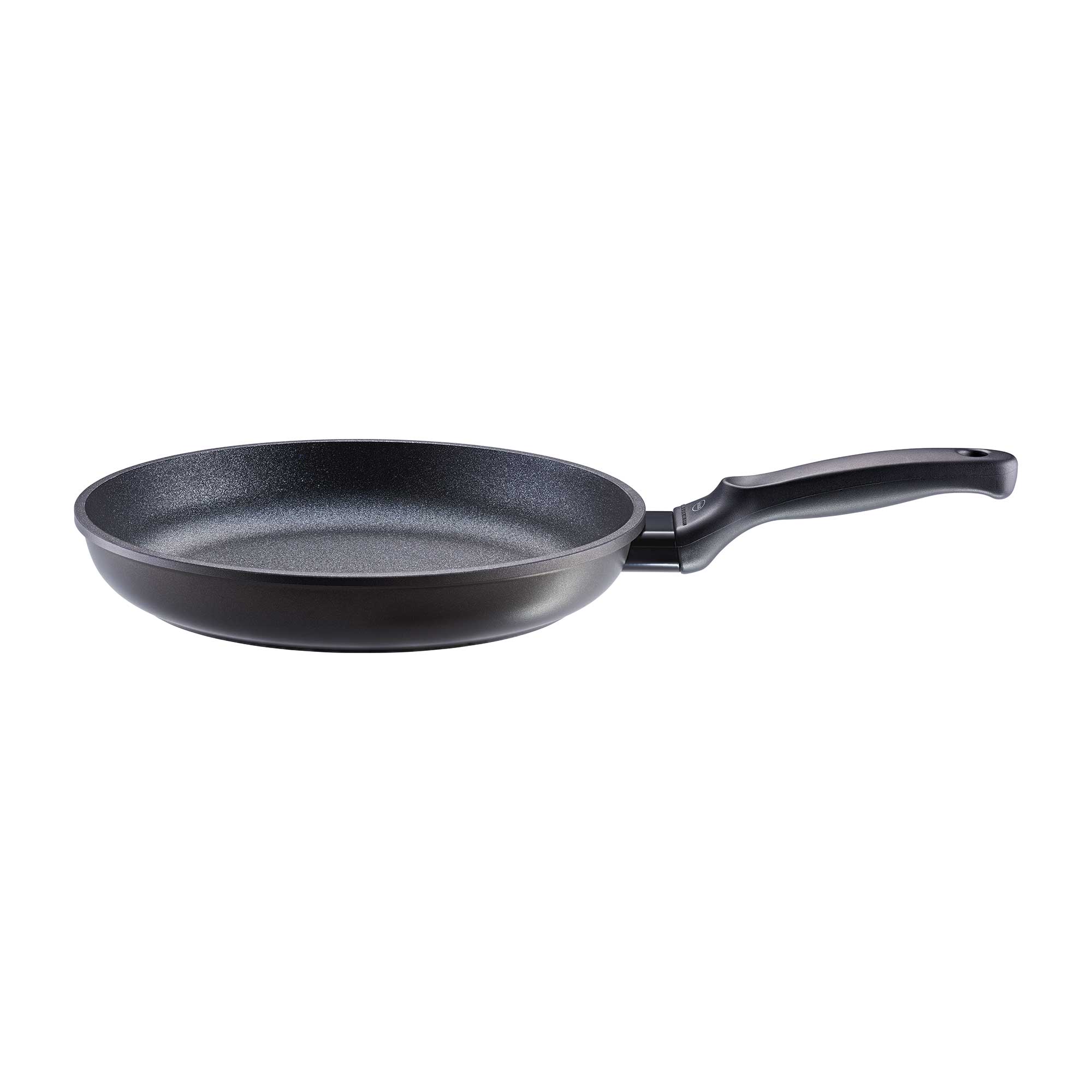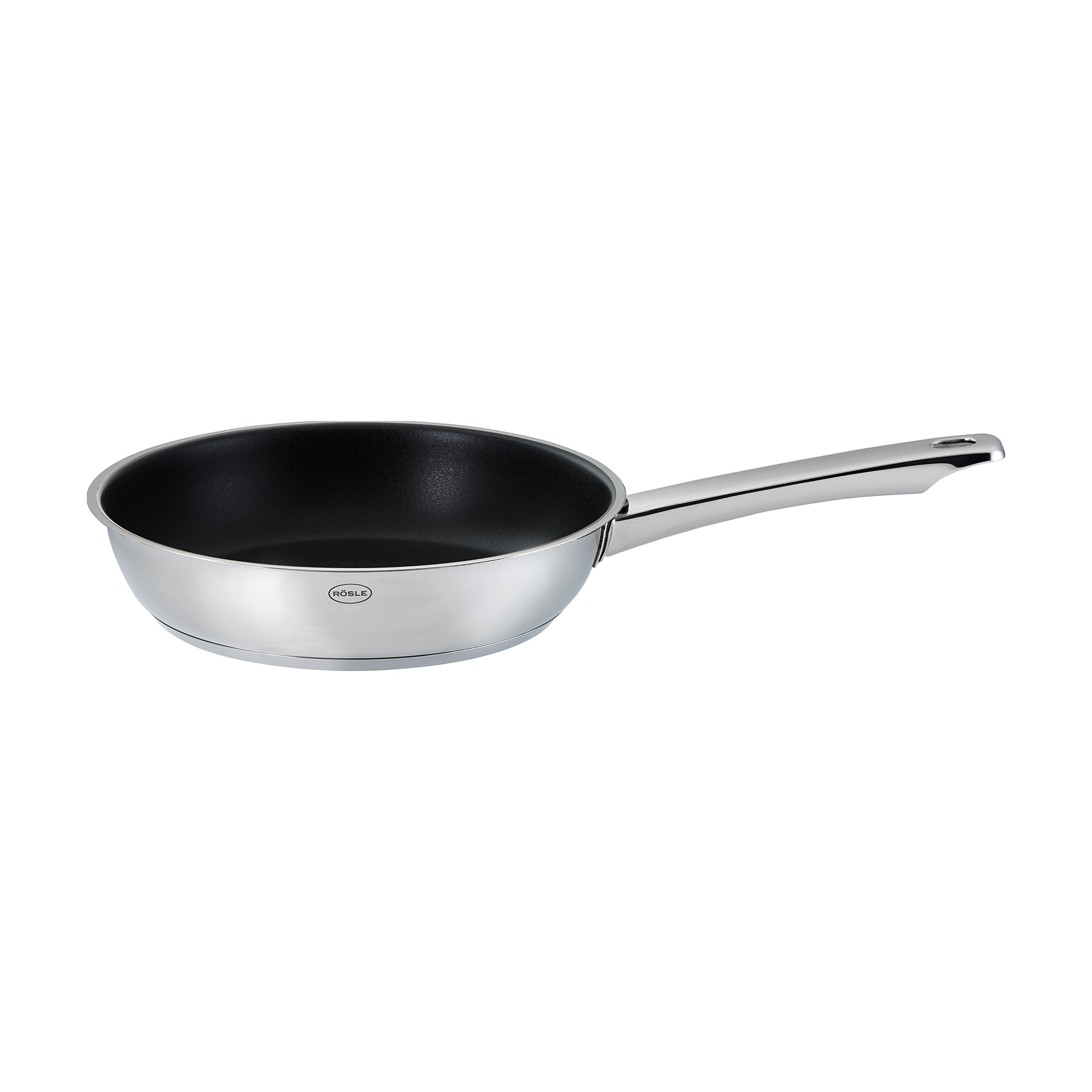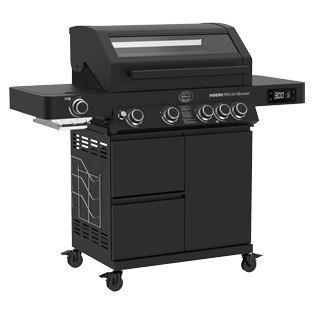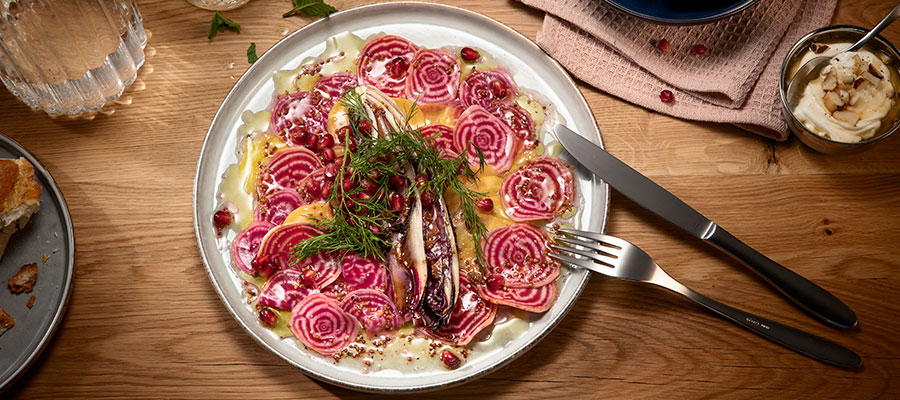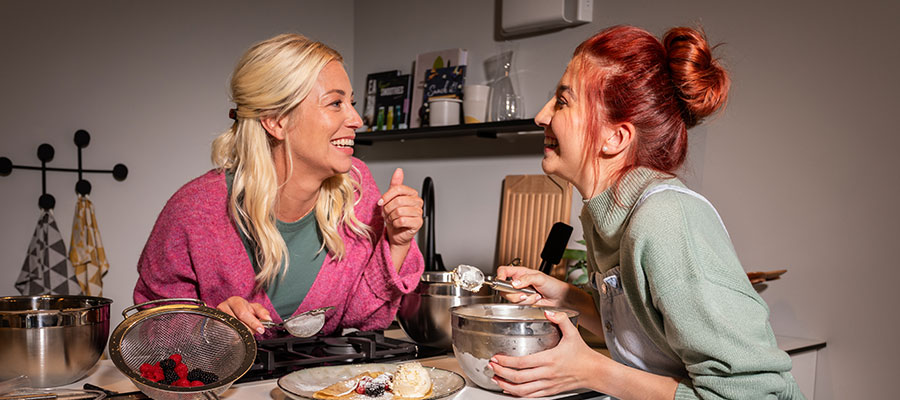Differences that can be tasted: Frying pans from RÖSLE .
Differences that you can taste: Frying pans from RÖSLE
Every household has one or more frying pans. But have you ever wondered what the difference is between an aluminum and a stainless steel pan? And what is the difference between a serving pan, a wok or a braising pan and a classic frying pan?
If so, you have probably noticed that things that seem familiar and obvious are often difficult to put into words. So that you are well informed about what distinguishes a frying pan from other types of frying pan before buying a new one, we have summarized the most important features of high-quality frying pans for you below.
What distinguishes a frying pan from other pans?
A frying pan is a flat container with a handle in which food is fried. In contrast to a saucepan, the walls of the pan are kept low and the diameter of the base of the pan is smaller than the diameter at the top of the pan.
However, this general description must be supplemented or varied depending on the type of pan. For example, frying pans, braising pans and woks differ in that the walls of braising pans and woks are higher than those of frying pans. Both types of pan are also more often used with a lid. Unlike a frying pan, a serving pan and a wok do not have a handle, but rather two handles.
It is no coincidence that the different types of frying pan are different in shape, but is related to the way they are used. A flat frying pan is best used with a spatula. Fried potatoes, fried eggs or steaks can be heated and turned quickly and easily. The handle ensures that the frying pan can be turned easily.
The frying pan is therefore used for everything that can be fried with or without frying fat and is always used when it is important for the heat to be transferred evenly to the base of the cookware. This in turn distinguishes it from the wok, in which different temperature ranges are desirable because the food is usually prepared in it using the stir-frying technique.
The shape is therefore one of the main distinguishing features of frying pans. These can be further subdivided, for example into fish pans, grill pans or steak pans. They are also commonly classified according to material, for example as stainless steel pans, aluminum pans or cast iron pans.
Ideally, you should choose a frying pan if you like your food to be crispy fried, roasted or cooked without a lot of liquid or other ingredients and it is important that you can easily turn the food or swivel the pan by the handle.
What are the advantages of different frying pans?
Frying pans are the ideal cookware for short roasts. However, not only do they differ from other types of frying pan, they also differ greatly from one another.
We have already mentioned above that frying pans are made from different materials. The properties of these materials influence what happens in the pan and where it can be used. Aluminum, for example, is an excellent conductor of heat, while stainless steel retains heat for longer. An uncoated cast iron pan can be used on the hob as well as on the grill.
The coating of a frying pan also has an effect on how the pan can best be used. If you also want to braise in the pan, bake pancakes or prepare sauces from the gravy, a coated pan is a good choice. Its non-stick coating prevents food from sticking to the base. A cast iron frying pan, on the other hand, deliberately does not have a coating. A patina forms through use, which has a similar effect to a non-stick coating.
The versatility of frying pans is also demonstrated by the fact that they are produced in many different sizes. As a small omelette pan or as a frying pan for fried eggs with a diameter of 20 cm and non-stick coating. As an uncoated pan of medium size for steaks or burger patties, which can withstand high heat so that the meat is sealed immediately. Or as a frying pan with a diameter of 28 or 32 cm and a ceramic coating, which can be used to fry crispy fried potatoes to feed the whole family or the skat club.
When choosing a frying pan, look out for other advantages that high-quality pans offer. These include the fact that the pan can be used on all types of stoves and in the oven. With the exception of uncoated pans, which should develop a patina, modern frying pans are usually also suitable for cleaning in the dishwasher.
Frying pans from RÖSLE: individual selection for beginners and professional chefs
Have you already decided on a particular material or shape for your new frying pan? Then you are sure to find the right model in the RÖSLE range, as our frying pans belong to series that have subtle differences but are uncompromisingly similar in one respect: the quality of their manufacture and the attractiveness of their design.
For example, you will find aluminum pans with non-stick coating in our CADINI and RAISE series. Aluminum ensures rapid and even heat distribution and is therefore an ideal material for frying pans.
The forged aluminum frying pans in the RAISE range, with their robust and riveted stainless steel handles, ensure pure enjoyment. Our frying pans from the CADINI range top the fact that frying with aluminum pans is particularly energy-saving: Because CADINI frying pans are made from 100% recycled aluminum. The aluminum pans, which can be used on all types of stoves and in the oven, are available in four (CADINI) or five (RAISE) different sizes.
Aluminum is a light metal, which makes it easier to lift the pans. But weight or no weight - for many people, a wrought iron pan without a non-stick coating is still the queen of frying pans. Because it fulfills all the important requirements for roasting and searing on the stove or grill: from the forged steel, which provides the pan's special surface protection, to the welded-on hook handle. And because it reminds us of the good old days when people used to gather around the stove every day to share a meal prepared with love and great culinary skill.
Almost every household has at least one stainless steel frying pan. If it is a frying pan from RÖSLE, it is equipped with an encapsulated aluminum base, which ensures rapid and even heat conduction and storage.
Stainless steel pans from our BASIC LINE range are protected by the ProPlex non-stick coating and are temperature-resistant up to 260 °C. A supple plastic handle (oven temperature resistant up to 70 °C) and a pouring rim all the way around ensure that even the first attempts at using a frying pan are a success.
The body and handle of the frying pans in our SILENCE PRO range are made from high-quality stainless steel; the base is protected by a ProResist non-stick coating reinforced with silicon carbide particles. Useful features such as a silicone coating on the handle, which can be used as a tray for frying utensils, also contribute to the fact that frying pans from the SILENCE PRO range clearly belong in the premium league of frying pans and saucepans.

